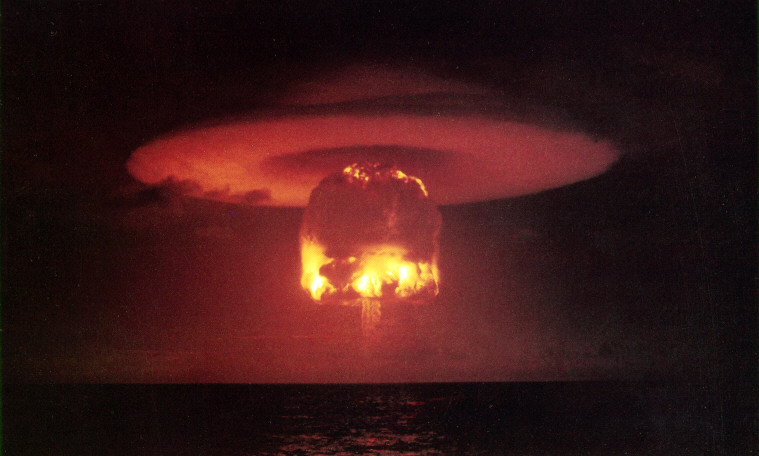. The United States and Russia have thousands of warheads either deployed or stored for possible use. The U.S. and Russia have decided to spend billions in developing new long range nuclear bombers to replace their aging fleets. In addition, both countries are working to maintain their existing stockpiles of warheads. While the U.S. and Russia are negotiating lower levels of operational warheads, other nuclear powers are busy building up their stockpiles
China is the next highest military spender after the U.S. which spends more on “defense” than the next 13 countries combined. China wants to be a regional super power in Asia and feels that it needs to expand its military capabilities to deal with neighbors and the U.S. presence in Southeast Asia. China has added ten nuclear warheads to their inventory, bringing it to two hundred and fifty. They are also committed to the development of new long range warhead delivery systems. On the bright side, we buy one quarter of their exports and they buy eight percent of our debt so any outbreak of hostilities would be very bad for the economies of both countries.
India and Pakistan have been feuding off and on since the two countries were created when the British granted their former colony independence in 1947. When India became a nuclear power with its first successful test device in 1974, Pakistan felt that it also had to become a nuclear power to balance its rival. In 1998, India conducted its second nuclear test and Pakistan conducted a whole series of underground nuclear tests. In the past year, Pakistan added another ten warheads bringing its inventory to about one hundred and twenty warheads and India added another ten warheads bringing its inventory to about one hundred and ten. Both countries are working on more advanced delivery systems, Even a limited nuclear exchange between these neighboring countries would be disastrous for both. Analysis of the prevailing winds and different times of the year indicate that explosions in either country would result in radioactive fallout in the other country.
France has not changed its inventory of three hundred warheads. England continues to maintain two hundred twenty five warheads. It is estimated that Israel has about eighty nuclear warheads. North Korea is estimated to only have a few nuclear warheads. However, its instability and belligerent attitude are destabilizing East Asia. Japan’s constitution forbids it from having nuclear weapons but there are political factions in Japan who want to change that in view of its nuclear armed neighbors. Japan has a sophisticated nuclear industry and facilities that can turn out weapons grade plutonium. It would not take long for Japan to also become a nuclear power.
Unfortunately, the explosion of dozens of nuclear bombs could kill millions and plunge the world into chaos. The explosion of a few hundred nuclear bombs could destroy human civilization. While the other nuclear powers have small stockpiles compared to the U.S. and Russia, even they pose a major threat to the world.

